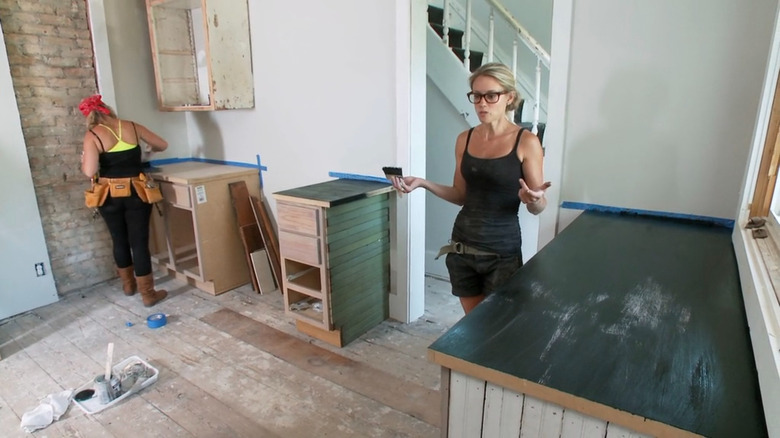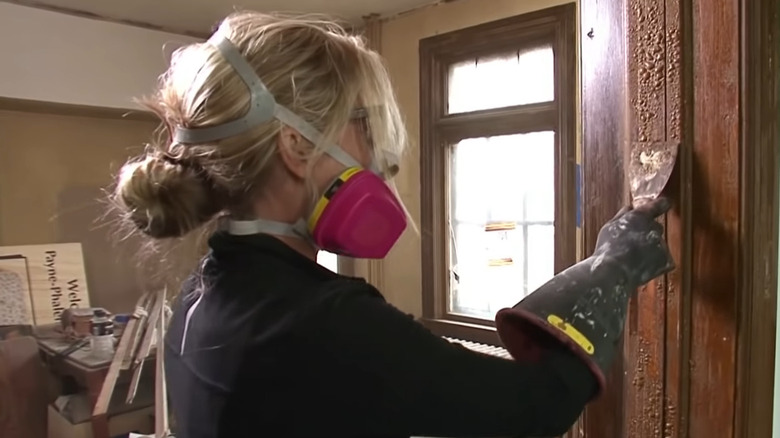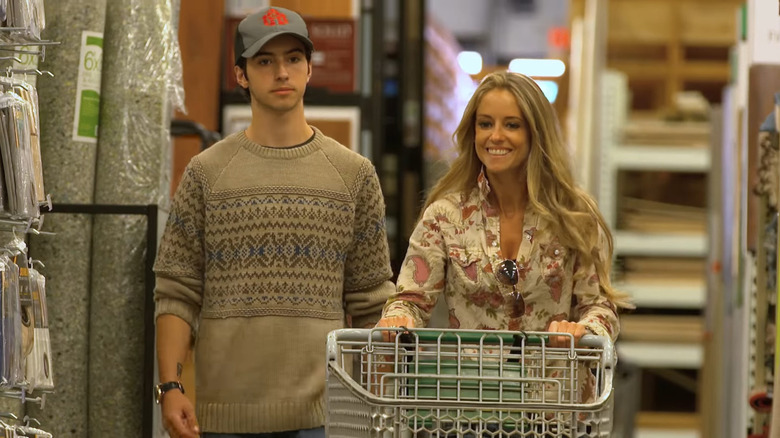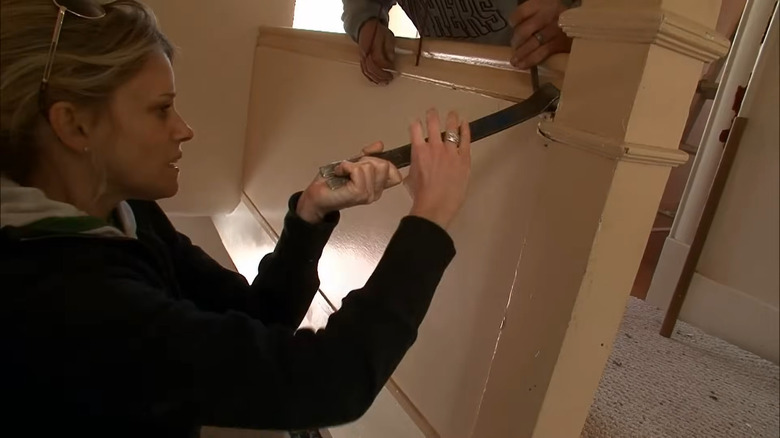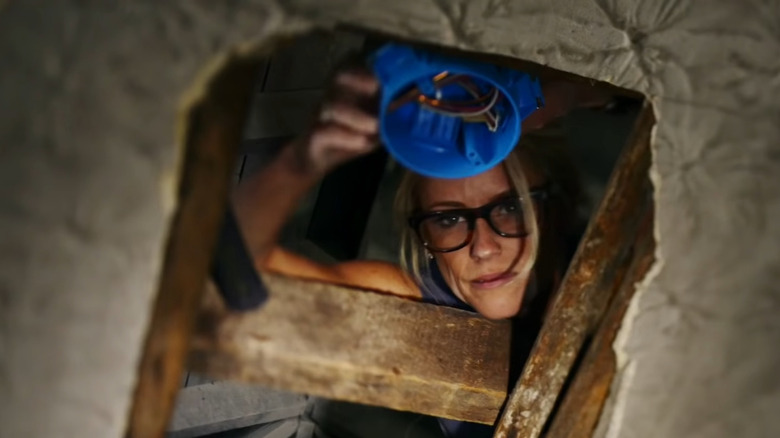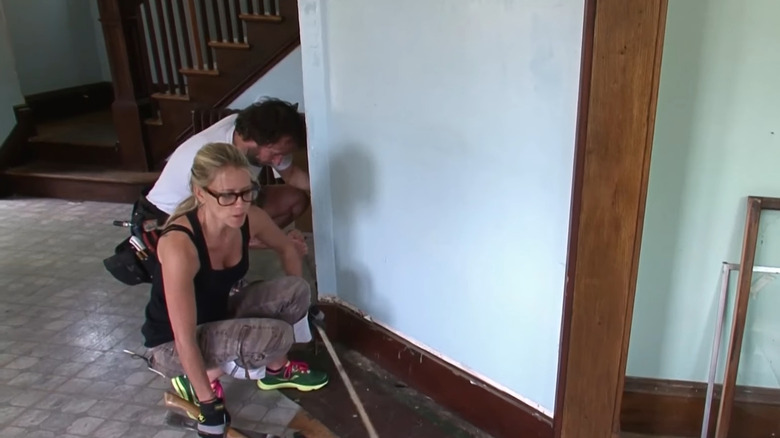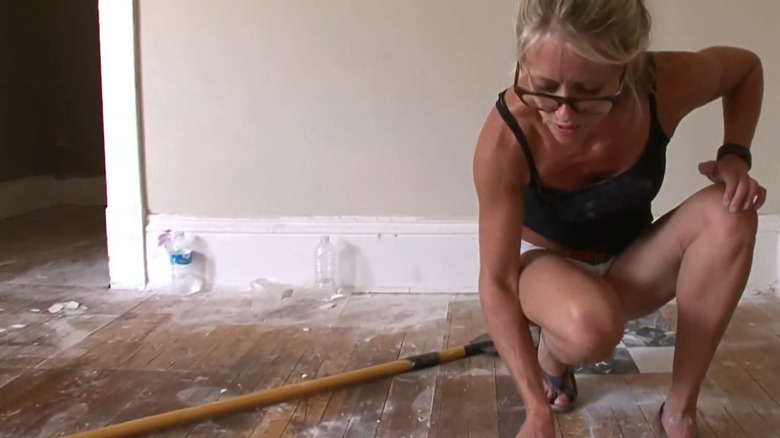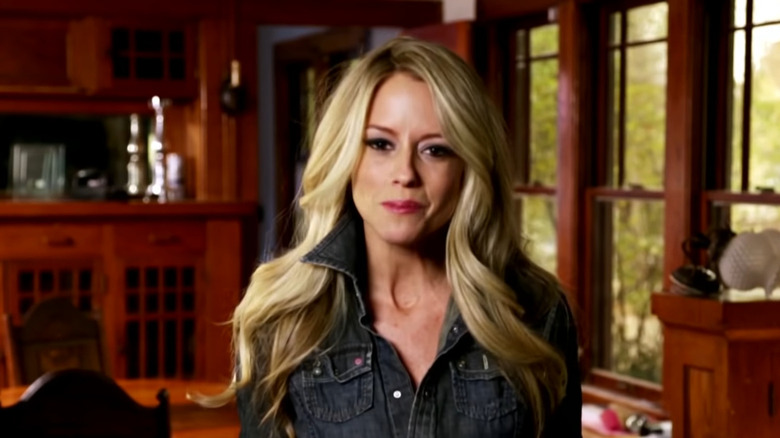Bad Advice Dished Out By Rehab Addict's Nicole Curtis
HGTV has come a long way from its roots as a garden and decor-focused channel. After passing through an era almost entirely focused on real estate, current hosts like Ben and Erin Napier of "Home Town" and Nicole Curtis of "Rehab Addict" brought a love of historic homes to the network, following an ethos of salvaging homes' original charm.
Curtis, in particular, is an interesting case. She lands somewhere in between the Napiers and the cutthroat market manipulation of the channel's house-flipping era. While she's ultimately hoping to flip the houses on her series for a profit, her show takes a slow, steady approach and only focuses on a few properties each season. Curtis pushes back against trend-jumpers and get-rich-quick schemers in the real estate marketplace.
"We're losing...architectural detail faster than we ever have before. Because people have the means to do it and they don't know what they're doing," she told Hour Detroit. "It's terrible to see." Curtis' heart is in the right place, but that can falter when she tries to give advice beyond the scope of her current project. Her own tastes and seat-of-your-pants style can frequently leave professionals and viewers scratching their heads. Here are several times that Curtis has offered suggestions that don't hold up.
Preservation trumps functionality and modern materials
Curtis' top renovation tips encourage reusing everything. She's a preservationist and a budget-minded rehabber. After all, the show is called "Rehab Addict", not "Demo Addict".
This can lead to some mismatches of form and function in the finished project. Attempts to salvage the architectural details that were hand-built by 1900s craftsmen are laudable, but Curtis occasionally loses the forest for the trees trying to save as much of each home as she can. Curtis adores original cabinets and often opts to keep them rather than replacing them with modern alternatives. "These manmade materials were not made for years of wear and tear. They don't handle moisture well," she told The Oklahoman.
However, marble and butcher block are two of the HGTV star's favorite materials. The upkeep on these can be strenuous when compared to countertop options like quartz, which is a better choice when it comes to functionality. Plus, the latter materials are susceptible to scratching, whereas quartz will hold up against frequent use.
Always keep the original color palettes
A barrage of shiplap and farmhouse-chic is always going to be out of place in the aging Midwestern homes where Curtis works. Given the push of this look elsewhere on the network she calls home, it's understandable that Curtis would take a hardline stance on modernization. "What's hot right now won't be hot in 10 years. What will always be hot — and will maintain the home's value — is keeping with the era of the home," she told The Denver Post.
Curtis' love of the original deep orange and brown stains of the past is out-of-step with the last several decades in design. She's even said in a YouTube clip, "Painting woodwork is like a crime against an old house." However, many innovative renovators have moved toward keeping the original details and refreshing them with more modern hues. Across the industry, many experts swear by coating trim and molding in bright, white hues for a fresh and clean look.
Curtis believes you should stretch your budget to buy American
Nicole Curtis is patriotic to a fault. She once called out a buyer who removed an American flag because, as she explained, he didn't believe in displaying it. According to a post she shared on Facebook, she "offered them a one way, first class ticket to any country of their choice."
Elsewhere, Curtis has also pushed to make her own product line made in the USA. She noted in an interview with the Minneapolis Star Tribune that her branded products were slow to market because she was, "...still trying to find a manufacturer. It's a challenge to have everything made in the USA." She's also taken to X to proclaim her loyalty to American products saying, "Just for the record — I would pay more to find Made in the USA on the products I buy..."
However, it's important to note that not all DIYers can afford the same practice nor do they want to limit their options. Plus, you can find quality and reliable home improvement products that are made outside of the US. In fact, international tool manufacturers like Ryobi produce some of the most highly-rated options on the market.
Curtis always does her own demo
As a lifelong rehabber with an interest in the original materials that can be found in a house, Curtis loves to her own demolition at the start of projects. The hands-on approach with a pry bar or a sledgehammer allows her to find hidden gems underneath drywall and other modern coverups. "I do all my own demo," she explained to the La Crosse Tribune. "I do whatever I can because I reuse everything."
There's some truth to the idea that old houses can be hiding gold beneath patch jobs. However, there are plenty of things to know before you knock down a wall in your home. Inexperienced renovators might not know to look for plumbing lines and electrical components. There's also the possibility that the one you want gone is a load-bearing wall. In short, if you're worried you might hurt yourself or severely damage your home in the process of demo-ing, it's probably best to leave it to pros.
Always DIY first
It should come as no shock that Nicole Curtis is a hands-on type of renovator at this point. She prefers to fly into new challenges and use areas outside her expertise as learning opportunities. "If there's a project I don't know how to do, I always try to do it myself first before hiring it out," she told Popsugar. "Sometimes it succeeds, sometimes it fails miserably — then I watch someone fix the disasters I created and I learn from that as well."
That's an honorable ethos to live by if you remake old houses for a living and an easy one to stomach if you're remodeling a home that you're not currently living in. For novice rehabbers and sometime home-improvers, it could be costly and irritating. Can you really afford for a bathroom to be out of commission while you figure out plumbing fixes? Should you mess with complex and crucial components of your home beyond your expertise? It all comes down to knowing you own limitations, both as a handyperson and a homeowner.
Always restore original details
There's no doubt that a historical bent helps when you're in the business of renovating and selling old houses. But there's something to be said for the fact that Nicole Curtis is viewing her projects as houses to sell and not homes for her family to live in. Curtis explains on a YouTube clip, "Architectural details in old homes are often removed, altered, or just covered up throughout the years. My advice, take your time to figure out what was there and do your best to restore it or replicate it."
While she always pushes to restore these architectural details and the original placement of features in her homes, this might be at loggerheads with how you plan to use the space. Always consider the needs of your family first (and think long and hard about how any space will be used) before recreating the original state of a home. "Design Star" judge Vern Yip recommends focusing on durable and stain-resistant modern materials if you're designing your home with young children in mind.
It's always worth it to restore original floors
Curtis loves to go to work on unloved floors that are frequently found beneath carpet and laminate in her project homes. She's a crusader for the refinishing and restoring of these floors, saying on a YouTube clip, that she'll go to "pretty much any length to restore them." Curtis also recommends using salvaged wood and carefully patching damaged floors to bring them back to life.
There are reasonable limits to which floors the everyday renovator should take on as a project. A standard rule of thumb says that if 30% or more of the original hardwood is severely damaged, then the juice isn't worth the squeeze. It's not worth refinishing your hardwood floors if they are significantly rotted, uneven or suffering from widespread moisture damage. Plus, there might be bigger structural or mold problems that the original flooring is covering up.
Historical renovation is easy
Curtis knows that she's just one woman. In fact, her show attempts to convey the reality of these projects as she works her way through them. In a bold move for her chosen genre of show, home renovations don't wrap up in 22 minutes. Flips take half a season of television and the ups and downs of a renovation are shown to viewers.
Curtis has shared that she wants viewers to take up her (original) mantle and work as an ad hoc army of home renovators with an eye toward preservation. She explained to Do It Yourself that what she does is far from rocket science. "It's so easy. People think that it's not, and the biggest thing that I always tell people: take your time," she shared.
We'd hate for would-be renovators to think the process of keeping up a historic home is easy. There are frequently legal hurdles to any renovation you might wish to do and older homes require near constant upkeep to keep them looking as fresh as the day they were built. It's not for the faint of heart.

